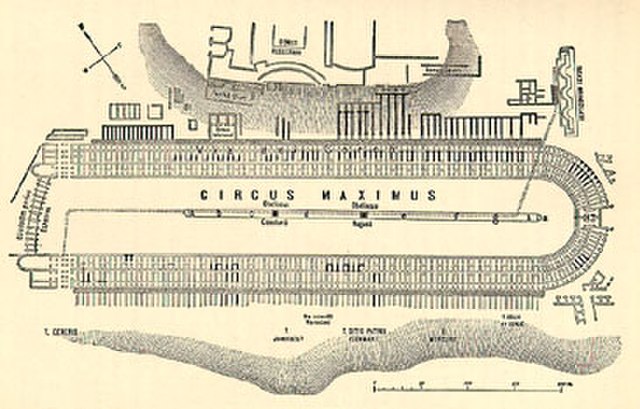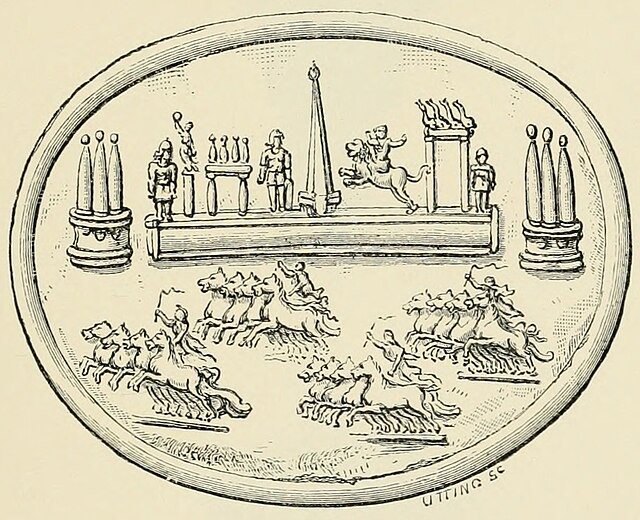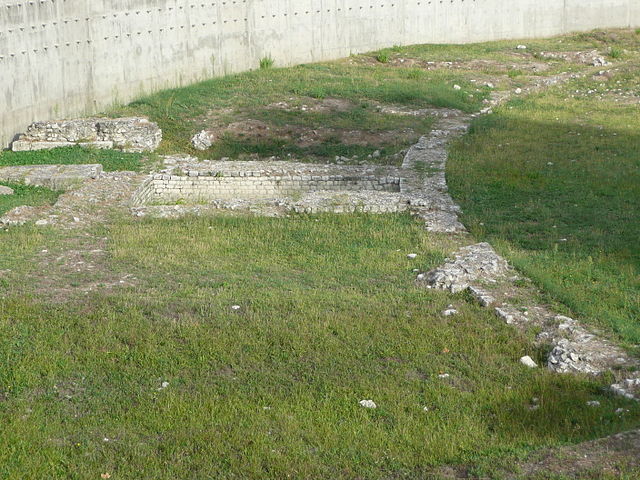A Roman circus was a large open-air venue used mainly for chariot races, although sometimes serving other purposes. It was similar to the ancient Greek hippodrome. Along with theatres and amphitheatres, circuses were one of the main entertainment venues at the time.
The site of the former Circus Maximus in modern-day Rome
Floorplan of Circus Maximus. This design is typical of Roman circuses.
Circus, with chariot-race going on: the central division (spina) with its dolphin fountains, and the conical metae. Astarte on her lion, placed on the spina, being the tutelary goddess of Carthage, may indicate that this is the Circus of Carthage. After engraving in sard, much enlarged in the drawing; found at Binchester (Binovium).
Image: Arles, cirque romain 5
Chariot racing was one of the most popular ancient Greek, Roman, and Byzantine sports. In Greece, chariot racing played an essential role in aristocratic funeral games from a very early time. With the institution of formal races and permanent racetracks, chariot racing was adopted by many Greek states and their religious festivals. Horses and chariots were very costly. Their ownership was a preserve of the wealthiest aristocrats, whose reputations and status benefitted from offering such extravagant, exciting displays. Their successes could be further broadcast and celebrated through commissioned odes and other poetry.
Modern depiction (1876) by Jean Léon Gérôme of a chariot race in Rome's Circus Maximus, as if seen from the starting gate. The Palatine Hill and imperial palace are to the left
Chariot racing on a black-figure hydria from Attica, ca. 510 BC
The Charioteer of Delphi, an anonymous charioteer who probably drove in the Pythian Games for Polyzalus, tyrant of Gela, in Sicily (480–470BC)
A plan of the Circus Maximus. The starting gates are to the left, and a conjectured start-line cuts across the track, to the right of the nearest meta.







